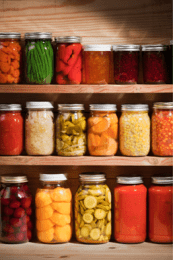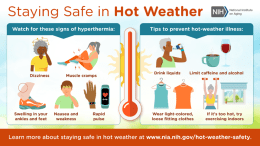Canning your own garden produce or farmer’s market purchase can be rewarding and a great way to save your food for later use.
 Food preservation recommendations have been updated. If you are new to canning, are using recipes that are more than 5 years old, or haven’t canned in a few years, it is important to start out by getting educating yourself on preserving food safely to prevent foodborne illness.
Food preservation recommendations have been updated. If you are new to canning, are using recipes that are more than 5 years old, or haven’t canned in a few years, it is important to start out by getting educating yourself on preserving food safely to prevent foodborne illness.
For canning fruits, pickles, jams, jellies, and most tomato products, a water bath canner or large stock pot with a lid and rack is needed. Water bath canners have fitted lids and removable perforated or shaped wire racks. The canner must be deep enough that at least one or two inches of briskly boiling water covers the tops of jars during the entire water bath processing.
For canning plain vegetables, some tomato products, and all meats, a pressure canner is needed. Today’s pressure canners may have a weighted gauge or a dial gauge for indicating and regulating pressure. Dial gauges should be checked for accuracy once per year.
With either method of canning, always read the manufacturer’s instructions before canning any food. Be aware that some canners cannot be used on glass stovetops.
Learn more about water bath and pressure canning at www.rrc.k-state.edu/preservation.
If you have questions about canning safely, need trusted canning recipes, or would like to have your pressure canning dial gauge checked for accuracy contact Jamie Rathbun, 785-524-4432 or jrathbun@ksu.edu.
By: Jamie Rathbun
 Severe infestation of spider mites will eventually kill the leaves on tomato plants, reducing the vigor of the plant and the number and quality of fruit produced. Can you identify a spider mite on your tomato plant?
Severe infestation of spider mites will eventually kill the leaves on tomato plants, reducing the vigor of the plant and the number and quality of fruit produced. Can you identify a spider mite on your tomato plant?




 Food preservation recommendations have been updated. If you are new to canning, are using recipes that are more than 5 years old, or haven’t canned in a few years, it is important to start out by getting educating yourself on preserving food safely to prevent foodborne illness.
Food preservation recommendations have been updated. If you are new to canning, are using recipes that are more than 5 years old, or haven’t canned in a few years, it is important to start out by getting educating yourself on preserving food safely to prevent foodborne illness.